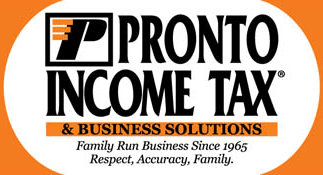Tax Changes for 2010
We are always out on the lookout for tax changes that can mean that our clients have more money in their pockets. 2009 was an extremely busy year for tax changes and 2010 is no slouch, either. Below you will find a summary of the important income tax law changes that may affect you for tax year 2010.
(Remember, too, that in the tax world we are one year behind, so these changes apply to 2010 meaning that you will be filing your 2010 return in calendar year 2011).
President Obama Extends “Bush Tax Cuts”
The so-called “Bush Tax Cuts” were a major political issue towards the end of 2010. These tax policies, one phase instituted in 2001 and the next phase in 2003, lowered the federal income taxes of every person who pays federal income tax, and were scheduled to “sunset” (read: expire) at the end of 2010.
The Bush Tax Cuts featured:
- Lower marginal rates including a 10 percent tax bracket
- Faster expensing of business equipment, especially work-related vehicles over 6,000 lbs.
- Increased Child Tax Credit of $1,000 per child
- 35 percent top marginal tax rate (39.6 previously)
- 15 percent long-term capital gains rate
- 15 percent maximum dividends rate
- 0 percent capital gains / dividends tax rate for certain middle and low income taxpayers
After much negotiating in Congress, pretty much all of these policies were extended. In that sense, one of the biggest “changes” of 2010 was the lack of change in terms of the existing tax laws being extended.
Expanded Earned Income Credit
The Earned Income Tax Credit, or EITC, is the largest anti-poverty program in the U.S. today, with upwards of $50 billion disbursed per year through this program. President Obama has expanded the EIC program so that more taxpayers are eligible and the amounts of the credit have been increased.
Taxpayers with children may receive up to $5,666 of Earned Income Credit for 2010, so this is real money that we are talking about here.
Furthermore, you can now get EIC for three children, before only two children could qualify.
If you are earning less than $40,000 per year and supporting children who live in your home, make sure you check to see if you qualify for the Earned Income Credit.
Did you know that you can claim the Earned Income Credit for a child without claiming that child as a dependent? Did you know that you can claim the Earned Income Credit based on your “cash” earnings, meaning you don’t necessarily have to get a W-2 form to get a tax refund? Did you know that the Earned Income Credit is among the most heavily-audited credits by the IRS, so you should be careful and make sure you qualify before claiming this credit?
There are many tricks of the trade when it comes to Earned Income Credit, so make sure your tax preparer is well-schooled in this area.
Making Work Pay Credit and Payroll Tax Credit for 2011
Another tax change worth noting is that of late the government has been making efforts to cut the cost of Social Security tax for employees. This is being done, in 2010, through an extension of the “Making Work Pay Credit,” which is $400 per taxpayer, or $800 for a married couple.
In 2011, Social Security taxes (otherwise known as the FICA or “payroll tax”) for employees were cut from 6.2 percent to 4.2 percent. In other words, if you’re making $50,000 per year, your taxes for 2011 will be $1,000 lower.
Self-Employed Health Insurance Can Reduce Self-Employment Tax
Along the same lines as the Making Work Pay Credit is the decision by the Obama Administration to allow the cost of health insurance for self-employed people, their spouses, and any dependents to be used as a deduction that reduces not only income tax, but the self-employment tax as well.
The self-employment tax is the Social Security and Medicare tax paid by self-employed taxpayers, and is assessed at a rate of 15.3 percent of net business profit. This tax can be quite costly for a self-employed person and therefore the ability to deduct health insurance against this tax is quite helpful for self-employed people.
For taxpayers with profitable businesses, this change in the tax law can amount to a 15.3 percent cut in the cost of health insurance. Considering that self-employed health insurance is not exactly cheap, self-employed taxpayers should definitely take note of this change and make the most of it as a tax reducion strategy.
Refund Anticipation Loans Going the Way of the Dinosaur
Once upon a time, there was a tax place on every corner offering to give you a big fat tax refund check within 24 hours. This product is called a Refund Anticipation Loan or RAL, meaning that a bank gives the taxpayer a loan based upon the taxpayer’s tax refund and then when the tax refund comes from the IRS, the bank uses the refund to pay back the loan.
Much like payday loans, the interest rates on these loans were often extremely, even offensively high (this is why Pronto has never really recommended or “pushed” this product, because it is very costly). In fact, several major tax companies have been repeatedly sued for “steering” customers into these high interest loans.
For tax year 2010, Congress and IRS are trying to drastically reduce the use of Refund Anticipation Loans. The major action taken was that the IRS no longer offers a “debt indicator” to the banks that provide RALs. This means that banks that provide RALs are no longer informed by the IRS of which taxpayers may have their tax refunds taken to pay federal debts such as child support, back taxes, or defaulted student loans.
To make a long story short, when the RAL bank isn’t sure that tax refund will come, it’s much harder to lend money based on that refund. The result is that many tax preparation companies, including H&R Block, are not offering Refund Anticipation Loans at all this year. Pronto can still get you money within 24-48 hours through our partner bank, Refund Advantage, but clients should be aware that the approval rates for these loans is much lower than in years past.
Accelerated “Expensing” of Business Assets
For business owners who investing money into “hard assets” like machinery, the rules on expensing business assets have been loosened for this year. Expensing means that you can deduct the entire cost of the asset in the year purchased, rather than depreciating the asset meaning taking a deduction over a number of years.
This can mean a change in tax strategy for certain business owners. Consult an experienced tax professional when making these kinds of decisions about when and how to deduct the cost of business assets. This is a tricky area of tax law where a professional can really earn his or her fee.
It is always a shame to see a good deduction go to waste because of the ignorance of an inexperienced tax preparer.
IRS Running Late This Year
Because the extensions of the Bush Tax Cuts were done at the very end of 2010, the IRS needs to “reprogram” its computers and taxpayers who use Schedule A, Itemized Deductions, or take the educator expenses deduction, or claim a deduction for tuition and fees will have to wait to file their tax return until February 14th, when the IRS will start processing tax returns with those forms and deduction included.
Luckily for taxpayers who are worried they won’t have enough time to get everything together before April 15th, tax season ends this year on April 18th, so you itemizers have a little extra time to get things situated.
Have tax questions or need tax information?
Call or visit Pronto today, we are here to serve YOU.



